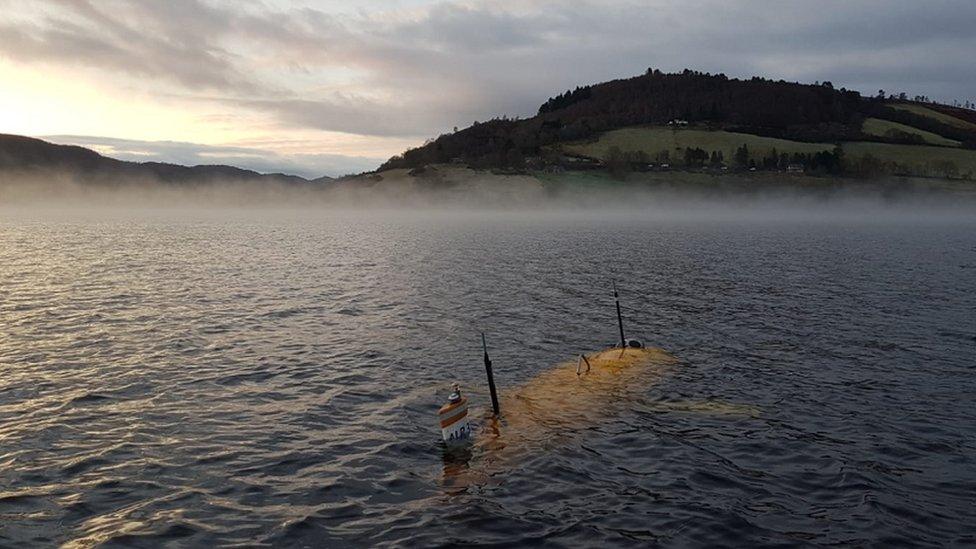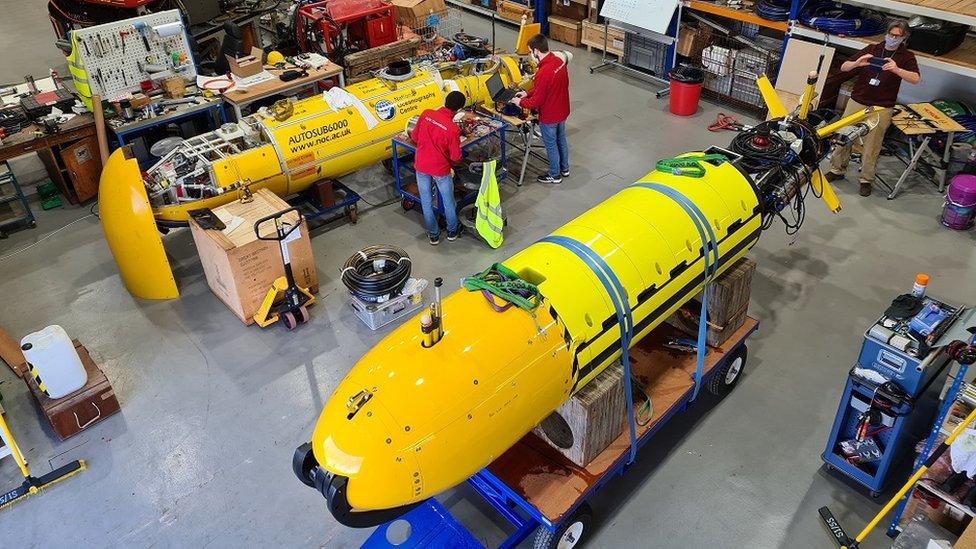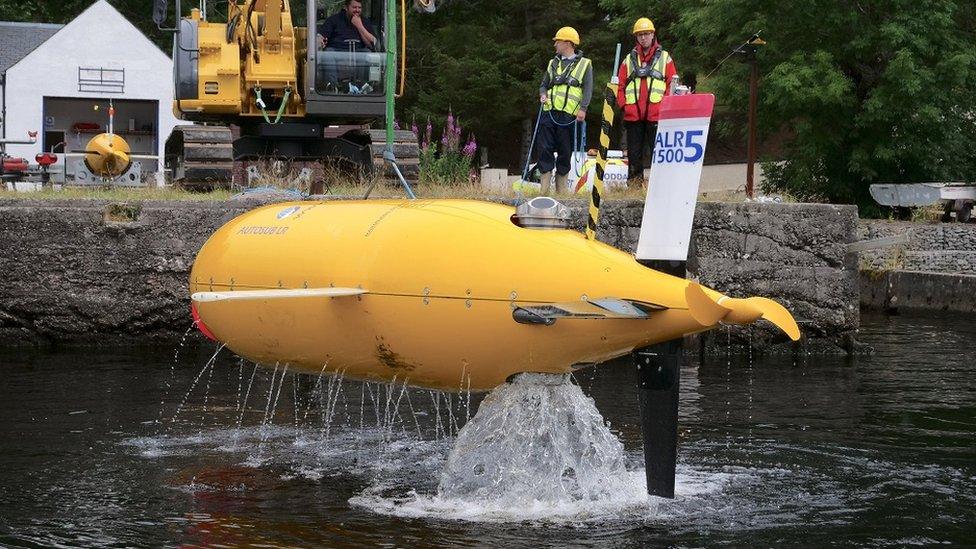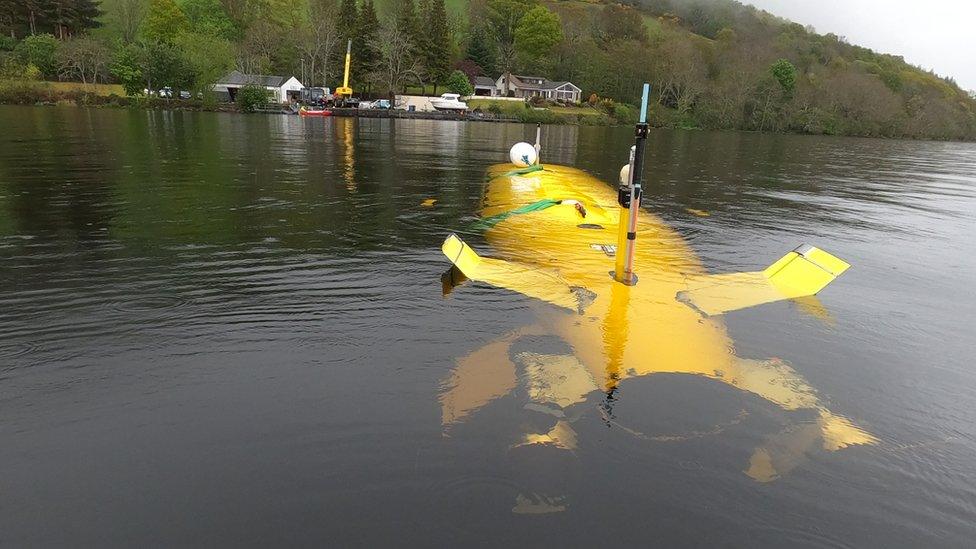Robot submarine Boaty McBoatface in Loch Ness dive tests
- Published

A robot submarine just below the surface of Loch Ness
Robot submarines, including one named Boaty McBoatface, are being tested in Loch Ness in preparation for deep sea research expeditions.
The machines are equipped with sensors for detecting marine life around icebergs and under polar icecaps.
They are designed to dive to depths of 6,000m (19,685ft).
Engineers are running the trials in Loch Ness because it offers a large enclosed space where it is easier to recover a lost sub than at sea.
The National Oceanography Centre (NOC) started the tests earlier this month and is due complete them on Saturday.
The machines have been launched into the loch from near Drumnadrochit.
Some of its robot submarines have been controlled from the centre's office in Southampton on England's south coast.

The robots have been designed for deep sea research expeditions

The trials have been run from a site near Drumnadrochit
Robot Boaty McBoatface got its name following an online initiative in 2016 in which the public was asked to suggest a name for a new polar ship.
Boaty McBoatface was the suggestion that gained most support.
UK government ministers rejected this as inappropriate, and ordered that ship be called RRS Sir David Attenborough. It was decided, however, that one of its robot submarines could be named Boaty McBoatface.

The tests in Loch Ness are due to be completed on Saturday

Dr Kristian Thaller, of NOC, said: "The trials in Loch Ness will ensure that UK researchers have access to cutting-edge technologies that enable world-leading science, whilst lowering the cost and reducing the environmental impact of missions by removing the need of a supporting research ship."
Loch Ness is more than 20 miles long (32km) and almost two miles wide (3km) at its widest point.
The official maximum depth is more than 228.6m (750ft), though a tour boat skipper in 2016 said his sonar equipment had recorded a new deepest point of 270.9m (889ft).